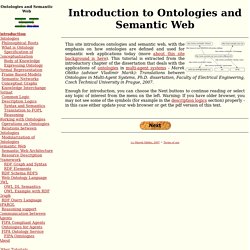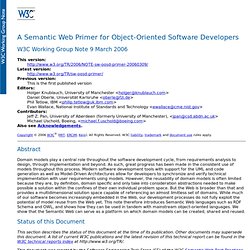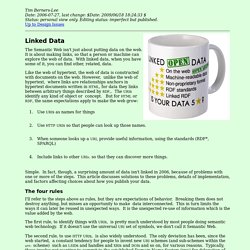

Introduction - Introduction to ontologies and semantic web - tutorial. This site introduces ontologies and semantic web, with the emphasis on how ontologies are defined and used for semantic web applications today (more about this site background is here).

This tutorial is extracted from the introductory chapter of the dissertation that deals with the applications of ontologies in multi-agent systems - Marek Obitko (advisor Vladimir Marik): Translations between Ontologies in Multi-Agent Systems, Ph.D. dissertation, Faculty of Electrical Engineering, Czech Technical University in Prague, 2007. Enough for introduction, you can choose the Next buttons to continue reading or select any topic of interest from the menu on the left.
Warning: If you have older browser, you may not see some of the symbols (for example in the description logics section) properly - in this case either update your web browser or get the pdf version of this text. (c) Marek Obitko, 2007 - Terms of use. A Semantic Web Primer for Object-Oriented Software Developers. W3C Working Group Note 9 March 2006.

Tabulator: Generic data browser. The Tabulator project is a generic data browser and editor.

Using outline and table modes, it provides a way to browse RDF data on the web. RDF is the standard for inter-application data exchange. You can use it in two ways As a Firefox Add-on The tabulator extension is a Firefox extension which allows Firefox to handle data as well as documents. As a web application The tabulator online version is a set of open source Javascript scripts ("AJAX") which can run in any web page to add data browsing. The Tabulator is open source under the W3C software license. Try it: Linked Data Research Centre. In an attempt to reaching out to the Web developers (called 'Hacker Joe', here ;) I've compiled a screen-cast on how one can understand the Web as a huge database .

The screen-cast starts out with a bit of explanation of some essentials, however, the bigger part of it is dedicated to two hands-on examples: first we query and use data from DBPedia (the linked data version of Wikipedia) and then we look into a heavily distributed linked data form, that is, using a FOAF profile we again query and use data from there. Note that the accompanying slides are available as well via slideshare . In case you want to test the queries used in the screen-cast along with the endpoints, here you are ... DBpedia Example In order to try it out, go to , paste it in and execute it. FOAF Profile Example In order to try out this example, go to , paste the above SPARQL query in and execute it. More Of This Stuff. Linked Data - Design Issues. Up to Design Issues The Semantic Web isn't just about putting data on the web.

It is about making links, so that a person or machine can explore the web of data. With linked data, when you have some of it, you can find other, related, data. Like the web of hypertext, the web of data is constructed with documents on the web. However, unlike the web of hypertext, where links are relationships anchors in hypertext documents written in HTML, for data they links between arbitrary things described by RDF,.
Use URIs as names for things Use HTTP URIs so that people can look up those names. Simple. The four rules I'll refer to the steps above as rules, but they are expectations of behavior. Linked Data: Evolving the Web into a Global Data Space. ARQ - SPARQL Tutorial. Knoodl. Welcome. What is the Semantic Web really all about? - Web Science - the World of the World Wide Web Blog. The Semantic Web is based on the relatively straightforward idea that to be able to integrate (link) data on the Web we must have some mechanism for knowing what relationships hold among the data, and how that relates to some “real world” context.

The following is a lot of detail that comes from this simple idea. To answer this question properly, let me start back in the early Web era. While I’m going to do some potentially boring personal history, I’ll note the key ideas as I go along. Circa 1995, my research group began playing with an idea (first proposed by my then student Sean Luke now a faculty member at GMU) that if web markup (it was all HTML back then) contained some machine readable “hints” to the computer, then we could do a better job of Web tasks like search, query, and faceted browsing. “Linked Data” (or “Web of Data”) – close to the original vision. OWL 2 Web Ontology Language Primer. W3C Recommendation 27 October 2009 This version: Latest version (series 2): Latest Recommendation: Previous version: (color-coded diff) Editors: Pascal Hitzler, Wright State University Markus Krötzsch, FZI Research Center for Information Technology Bijan Parsia, University of Manchester Peter F.
Sebastian Rudolph, FZI Research Center for Information Technology Please refer to the errata for this document, which may include some normative corrections. This document is also available in these non-normative formats: PDF version. See also translations. Copyright © 2009 W3C® (MIT, ERCIM, Keio), All Rights Reserved. Abstract.